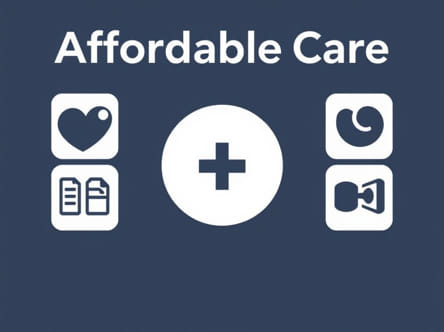The Affordable Care Act (ACA), often referred to as ‘Obamacare,’ significantly changed the landscape of the American healthcare system. Enacted in 2010 under President Barack Obama, the law aimed to increase health insurance quality and affordability, lower the uninsured rate, and reduce healthcare costs for individuals and the government. While it has faced political challenges, it remains one of the most impactful healthcare reforms in U.S. history, touching nearly every aspect of how Americans access and pay for medical care. Understanding the Affordable Care Act is essential for anyone navigating health coverage options or analyzing the structure of healthcare delivery in the United States.
Background and Objectives of the Affordable Care Act
Before the ACA was signed into law, tens of millions of Americans were uninsured, and many more were underinsured. Health insurance companies could deny coverage based on pre-existing conditions, and the cost of care was increasing rapidly. The Affordable Care Act was introduced to tackle these problems through a series of reforms aimed at expanding access, regulating insurers, and increasing transparency in the healthcare market.
Core Objectives
- Expand access to affordable health insurance
- Improve the quality of care and patient outcomes
- Increase consumer protections
- Encourage preventive services
- Control rising healthcare costs
Key Provisions of the ACA
Individual Mandate
One of the most discussed aspects of the ACA was the individual mandate, which required most Americans to have health insurance or pay a penalty. The rationale behind this provision was to ensure that both healthy and sick individuals participated in the insurance pool, thus spreading risk and keeping premiums more manageable. Although the federal penalty was eliminated in 2019, some states have kept their own mandates.
Medicaid Expansion
The ACA aimed to expand Medicaid eligibility to individuals earning up to 138% of the federal poverty level. However, a Supreme Court decision made Medicaid expansion optional for states. As a result, not all states chose to expand their Medicaid programs, leading to coverage gaps in some areas. In states that did expand Medicaid, millions of previously uninsured people gained access to healthcare.
Health Insurance Marketplaces
The law created online health insurance marketplaces where individuals and small businesses could compare and purchase health plans. These exchanges offered a range of standardized coverage levels Bronze, Silver, Gold, and Platinum and provided subsidies to low- and middle-income consumers to help offset premium costs.
Consumer Protections
The Affordable Care Act introduced a number of consumer protections aimed at making the health insurance system fairer and more transparent. Among these are:
- Prohibition on denying coverage for pre-existing conditions
- Removal of annual and lifetime limits on essential health benefits
- Requirement for insurers to cover preventive services without cost-sharing
- Extension of dependent coverage up to age 26
Impact on Individuals and Employers
Benefits for Individuals
For individual consumers, especially those without access to employer-sponsored insurance, the ACA provided new options. Subsidies made plans more affordable, and Medicaid expansion significantly helped low-income populations. The law also guaranteed a minimum standard of coverage, ensuring that policies covered essential services such as hospitalization, maternity care, and mental health treatment.
Employer Mandate
Employers with 50 or more full-time employees were required to offer affordable health insurance or face penalties. This provision, known as the employer mandate, aimed to encourage large employers to continue or begin providing health benefits to workers. Small businesses with fewer than 50 employees were exempt but could access tax credits through the Small Business Health Options Program (SHOP) to help with premiums.
Challenges and Criticisms
Despite its goals and achievements, the Affordable Care Act has not been without controversy. Critics have cited increased insurance premiums for some populations, regulatory burdens on businesses, and reduced insurance options in certain areas. Political efforts to repeal or modify the law have led to legal battles and uncertainty for consumers and insurers alike.
Premium Increases
While subsidies have helped many people afford coverage, others have faced premium hikes, particularly in rural areas with limited insurer competition. Insurers have also adjusted rates to account for the increased risk pool, especially after the removal of the individual mandate penalty.
Political Opposition
The ACA has been a flashpoint in American politics since its inception. Multiple attempts to repeal or defund it have been made, especially during Republican control of Congress. However, despite these efforts, core elements of the law remain intact, including Medicaid expansion in many states and protections for pre-existing conditions.
Recent Developments and Future Outlook
Continued Enrollment Growth
Enrollment in ACA marketplaces has continued to grow in recent years, aided by extended enrollment periods and increased outreach efforts. The COVID-19 pandemic highlighted the importance of accessible healthcare and led to renewed efforts to expand coverage under the ACA.
Policy Reforms
Recent reforms have aimed at strengthening the law. The American Rescue Plan Act of 2021 expanded subsidies for marketplace plans and provided more generous financial assistance to enrollees. These changes resulted in significant premium reductions and allowed more Americans to qualify for zero-premium plans.
Expanding Medicaid in Remaining States
There are ongoing debates in states that have not yet expanded Medicaid. Advocates argue that expansion would improve health outcomes and reduce the burden on emergency care services. As of now, several states continue to resist expansion, despite evidence showing its economic and public health benefits.
The Affordable Care Act has reshaped the American healthcare system in profound ways. While not without flaws, it has increased access to care for millions of Americans, created a more standardized insurance market, and introduced significant consumer protections. The future of the ACA will likely include both further reforms and ongoing political debate. However, its legacy as a transformative piece of health legislation remains clear. For individuals seeking affordable health coverage, understanding the ACA’s mechanisms and benefits is more important than ever in navigating the complexities of U.S. healthcare.
